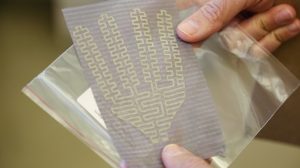A device called “magic gloves” created by engineering students from Virginia Commonwealth University helps people with Raynaud’s disease regulate the temperature in their hands and avoid the consequences that may happen from the sudden drop in temperature sensitivity that occurs during Raynaud’s attacks.
Raynaud’s disease is characterized by an abnormal reduction in blood flow in response to low temperatures or emotional stress, leading to cooling in the fingers, toes and other areas, and the discoloration of the skin in the affected areas.

During Raynaud’s attacks, people are not able to feel the pain caused by low temperatures. This may be dangerous because it can get to the point where frostbite and damage to tissues can occur due to freezing. After the attacks, when blood flow is restored, the hands and feet are in pain.
One of the students involved in the project, Jessica Bishop, has Raynaud’s disease.
“It’s something I’m very passionate about. It’s something that definitely affects me,” Bishop said in a news release. “There’s a slew of medications that they can put you on, like blood pressure medication, [but] there’s nothing specific to the Raynaud’s. It’s really just remedying the symptoms [by] wearing gloves, avoiding cold, avoiding stressors. Not drinking a lot of coffee.”
Using several computer simulations, the team was able to determine that nerve damage can occur 16 minutes after hands are exposed to zero degrees Celsius.
Although there are other gloves on the market for the same purpose, they don’t heat the back of the hands properly and are too bulky to use comfortably or avoid sweating. The magic gloves, however, register and regulate hand temperature.
How do they work? The gloves include a special fiber that heats up when electricity is applied, as well as a controller with a thermometer that is able to activate two heaters. When temperatures reach a dangerous level, the controller turns on only one heater, keeping hands at a safe temperature. But if the temperature decreases beyond that, the second heater is activated as well. When temperatures rise again, the heater turns off so that hands don’t sweat.
Despite the mechanisms from which they are built, the gloves are very light and easy to use. The inside and outside layers of the gloves can be separated, allowing people to wear them indoors as well, especially those who work in cold offices, for example.
The university has received a provisional patent for the gloves, and is seeking a private sponsor for a permanent patent.


